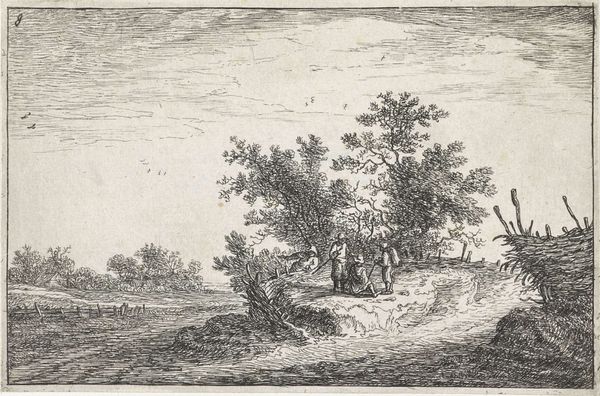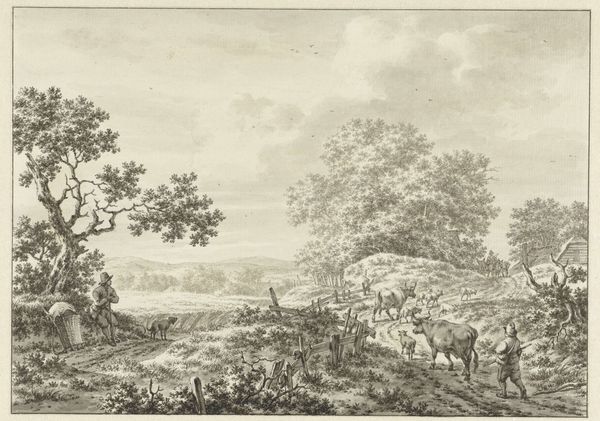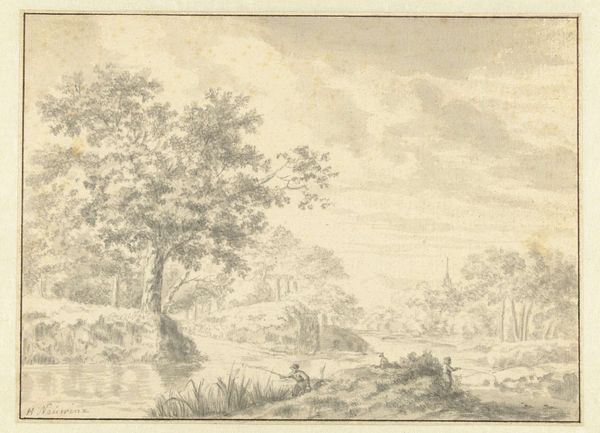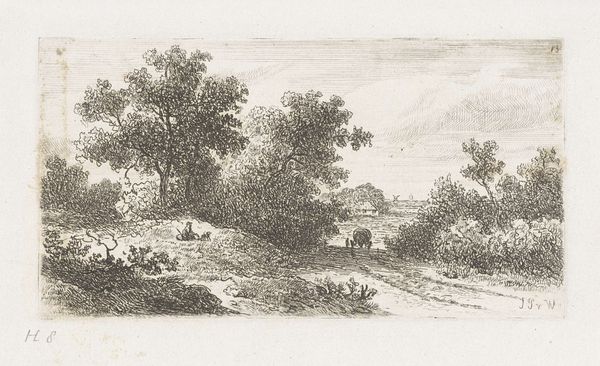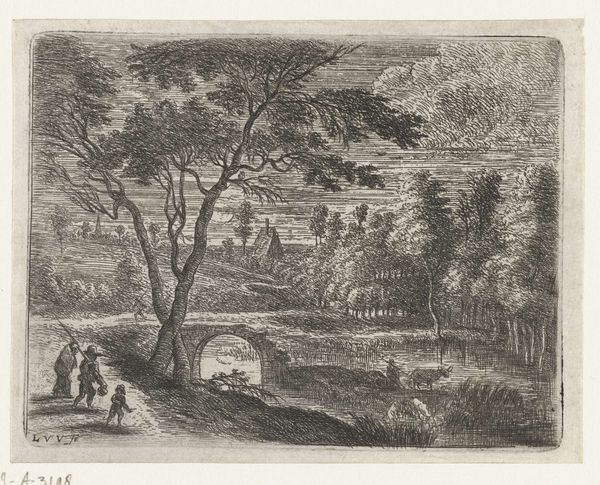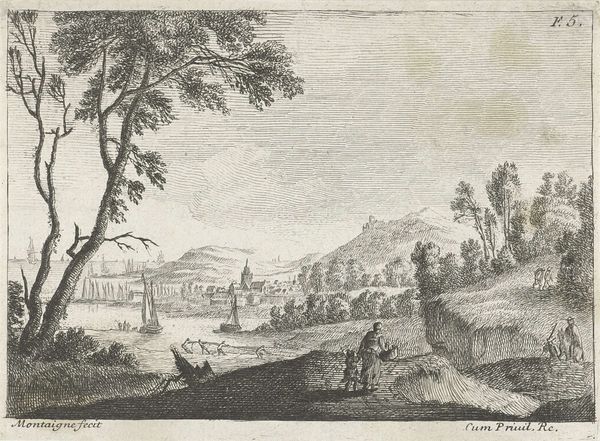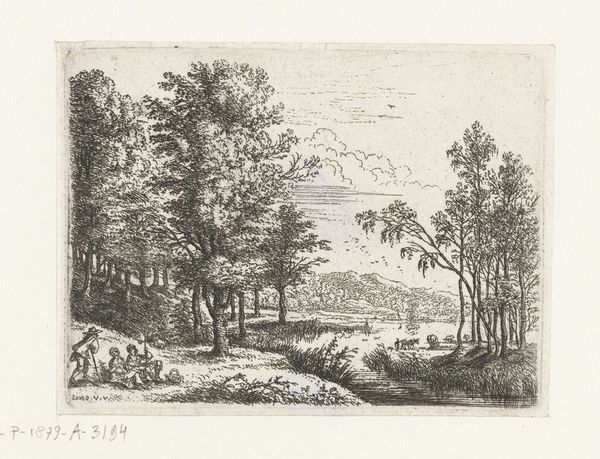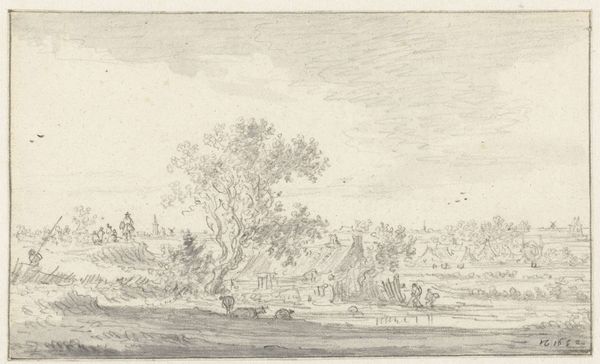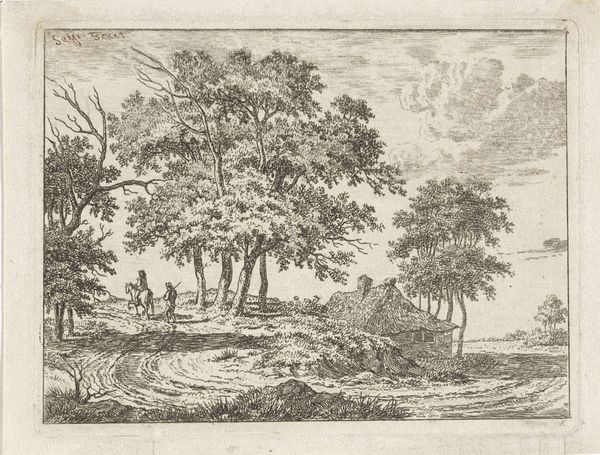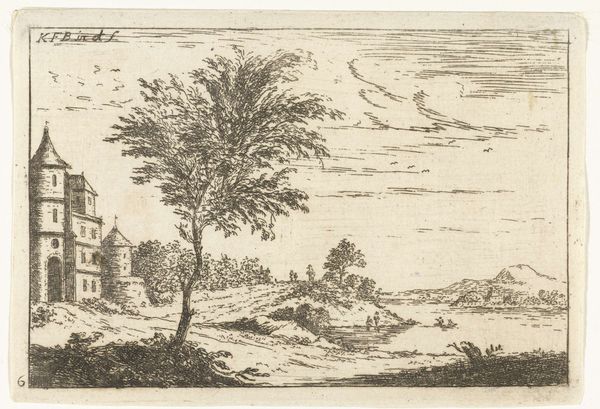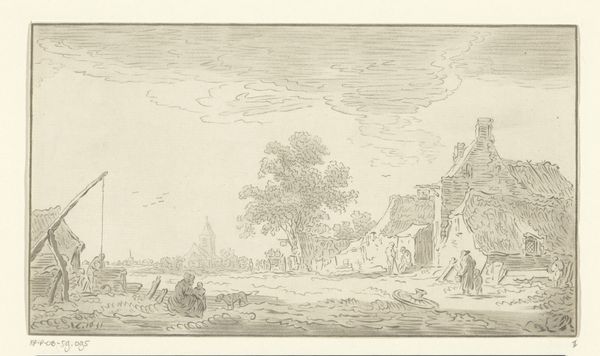
drawing, print, etching, plein-air
#
drawing
#
dutch-golden-age
# print
#
etching
#
plein-air
#
landscape
#
etching
Dimensions: height 98 mm, width 139 mm
Copyright: Rijks Museum: Open Domain
Curator: Before us, we have "Landscape with a Fisherman on the Waterfront," an etching created sometime between 1715 and 1800. It resides here at the Rijksmuseum. What’s your first impression? Editor: It’s quite stark. The almost monochromatic palette evokes a feeling of melancholy, doesn't it? The dense crosshatching really emphasizes the heaviness of the sky. Curator: I'm struck by the tangible elements—the types of lines etched, and how their manipulation creates light and shadow in this seemingly quiet landscape. This anonymous printmaker uses the etching medium to depict nature, not just observe it. Look at the detail of the tools—simple tools made for the production of a humble landscape. Editor: The fishing figure seems to be integrated into the design more broadly. Fishing features significantly in this scene, a small part, but the figure seems dwarfed. Perhaps to signify his place within this natural scene and the culture surrounding Dutch maritime life at the time. Curator: Right. Dutch Golden Age art was so often about the water, the sea. It brings up an interest in the work that's being performed in the work: that is, the means and context of the act of fishing itself, which implies industry. It makes me wonder about the larger context of printmaking at the time too—the social status, materials available, consumption. It certainly lends insight into Dutch economy. Editor: But the lone fisherman...isn’t it also about isolation? Dutch landscapes often use the symbol of figures within nature to illustrate a point about the human condition, about our relationship with the natural world around us, a tiny speck amidst the infinite, the divine. Curator: You bring up a good point, that’s true. The labor of this work is almost obscured in its seemingly idyllic scene. The focus on material concerns risks ignoring some key psychological themes, so this blending gives me more appreciation. Editor: Ultimately, that intersection gives the image meaning. Curator: Agreed, and now I see so much more. Thanks.
Comments
No comments
Be the first to comment and join the conversation on the ultimate creative platform.
